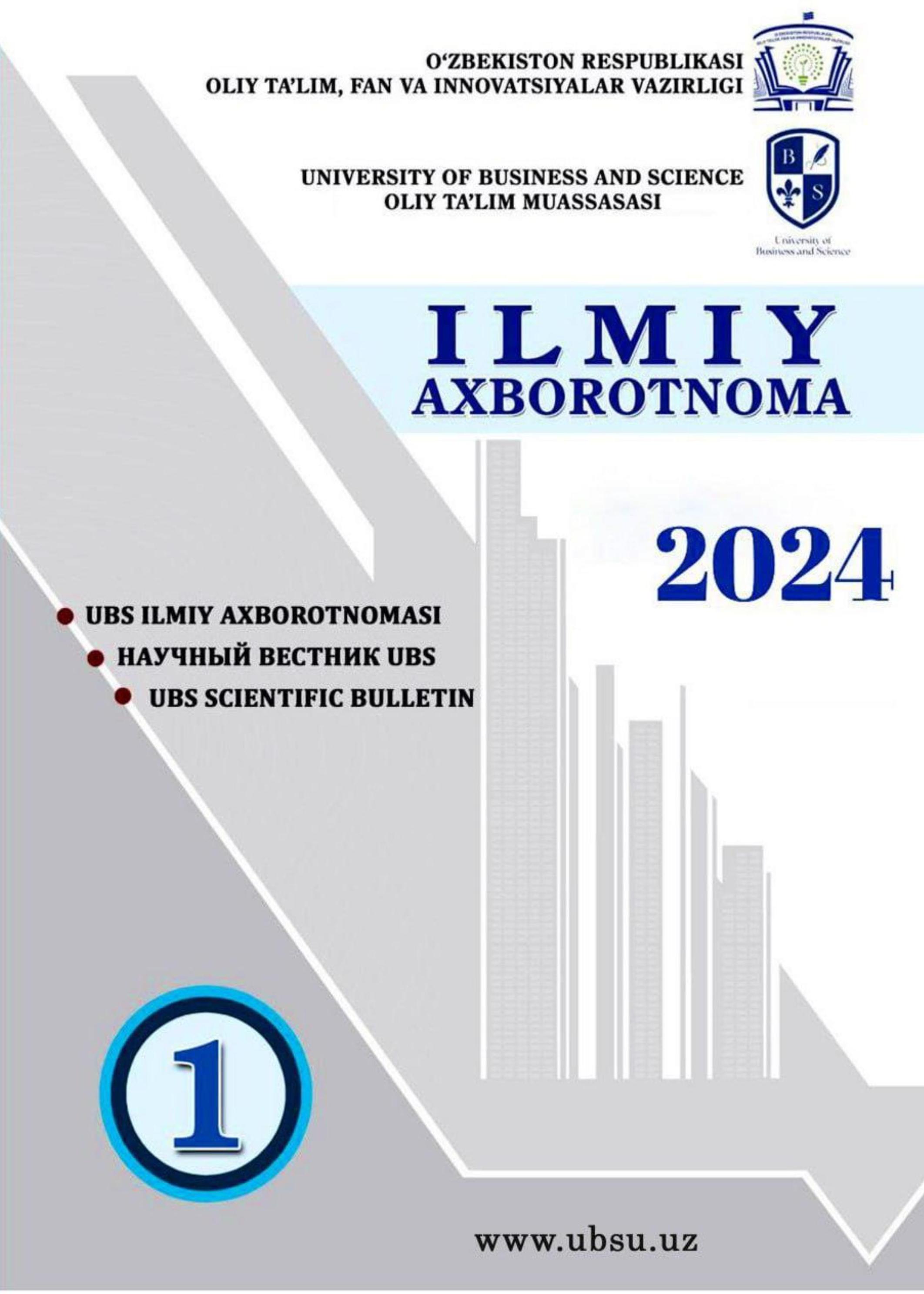HUMAN CAPITAL FORMATION: THE KEY COMPONENTS AND MAIN SOURCES
##plugins.themes.bootstrap3.article.main##
Abstrak
Maqolada inson kapitalining asosiy komponentlari va
shakllanish manbalarini oʻrganishdagi turli yondashuvlar koʻrib chiqilgan.
Turlicha yondashuvlarning umumiy jihatlarini aniqlash va g‘oyalarni
umumlashtirish maqsadida tegishli mavzuga doir keng ko‘lamli adabiyotlar tahlil
qilingan. Muallif ta’lim, sog‘liqni saqlash, malaka oshirish, migratsiya va
axborotni inson kapitalining asosiy manbalari sifatida tadqiq etib, inson kapitalini
4 ta asosiy tarkibiy qism – qobiliyat, bilim, ko‘nikma va shaxsiyatning majmui
sifatida oʻrganishni taklif qiladi.
##plugins.themes.bootstrap3.article.details##
Nashr
Bo'lim
##submission.howToCite##
##submission.citations##
1. Petty W. (1940). Economic and Statistical Works, Moscow: Sotsekgiz, p. 324.
2. Рикардо Д. (1993). Начало политической экономики и податного
обложения, Антология экономической классики (Том 1), Москва, с. 409.
3. Keeley, B. (2007). Human Capital: How what you know shapes your life,
OECD Insights, OECD Publishing, Paris, Available at:
https://doi.org/10.1787/9789264029095-en
4. Lanzi, D. (2007). Capabilities, human capital and education, The Journal of
Socio-Economics, 36(3), 424-435.
5. Messinis, G., & Ahmed, A. D. (2009). Human capital, innovation and
technology diffusion. Working paper No.43, Centre for Strategic Economic
Studies, University of Melbourne.
6. Dess G. G., & Picken J. C. (1999). Beyond Productivity: How leading
companies achieve superior performance by leveraging their human capital.
New York: AMACOM.
7. Aman-Ullah, A., Mehmood, W., Amin, S., Abbas, Y. A. (2022). Human capital
and organizational performance: A moderation study through innovative
leadership, Journal of Innovation & Knowledge, Volume 7, Issue 4, 100261,
ISSN 2444-569X. Available at: https://doi.org/10.1016/j.jik.2022.100261
8. OECD. (2001). The well-being of nations. The role of human and social capital.
Centre for Educational Research and Innovation. Paris: OECD.
9. Liu, G. (2011). Measuring the stock of human capital for comparative analysis:
an application of the lifetime income approach to selected countries. Working
paper No. 41, Statistics directorate, OECD.
10. Zukersteinova, A.; Green, F.; Dworschak, B.; Gensicke, M.; Karapidis, A.;
Nestler, K. & Riedmann, A. (2012, January 17-18). A task oriented
measurement concept in an employer survey of changing skill needs in Europe.
Paper presented in the Second International BIBB/IAB workshop TASKS2.
11. Зайцева, М. (2019). Формирование и использование человеческого
капитала сельских территорий. Диссертация на соискание ученой степени
кандидата экономических наук. Кубанский государственный аграрный
университет имени И.Т. Трубилина.UBS Scientific Bulletin – Научный Вестник UBS – UBS Ilmiy Axborotnomasi 1/2024
~ 62 ~
12. Tamilina, L. (2012): Explaining human capital composition and formation
mechanisms: a new conceptual framework of analysis. MPRA Paper No.
49820, posted 14 Sep 2013.
13. OECD Center for educational report and innovation (1998). “Human Capital
Investment: an International Comparison”. France.
